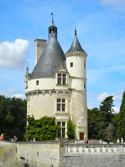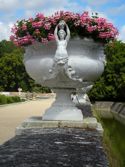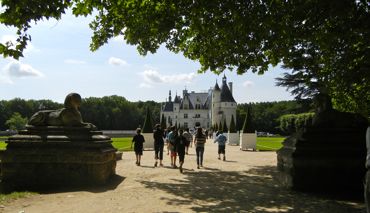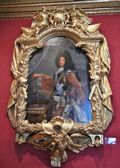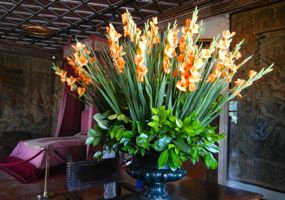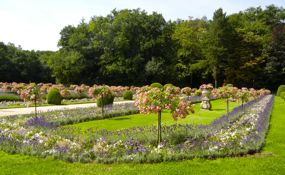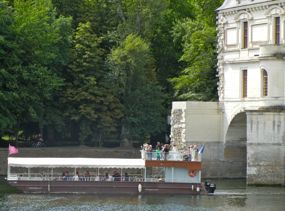 |
Château de Chenonceau, France | |
| This striking Château, which spans the Cher River, is one of the most beautiful—and most visited—of the Loire Valley Châteaux. | ||
|
|
|
The Château de Chenonceau is at the top of many visitors' lists when touring the Loire Valley. During the summer season it may host up to 6,000 visitors per day! There are good reasons for its popularity. It is an architectural beauty, and its graceful gallery across the Cher is unique and beautiful. It is surrounded by lovely gardens, and its interior is rich with Renaissance fireplaces, elegant furnishings, tapestries, and paintings—as well as windows and balconies with great views! Try to time your visit for early morning or late afternoon, and you may avoid some of the crowds. Give yourself plenty of time to stroll the grounds and take your time visiting the château. You approach on a tree-lined walk, emerging past a pair of sphinxes to your first view of the château. The garden of Catherine de Medici is on your right, that of her rival Diane de Poitiers on your left. (Upon the death of her husband, King Henri II, Catherine took Chenonceau from Diane de Poitiers, giving her the Château de Chaumont-sur-Loire in exchange.) Cross the moat and you're ready to enter. There is plenty to admire, from the luxurious bedrooms of various kings, queens, and favorites, to the large kitchens.
A large portrait of Louis XIV in an amazing gilt frame hangs in the Louis XIV drawing room, near a fireplace decorated with the salamander symbol of François I and the ermine of his wife, Claude de France. Small libraries with views of the river are charming spaces within the large rooms. The Grand Gallery, almost two hundred feet long, served as a magnificent ballroom during the time of Catherine de Medici and her son, King Henri III. With its black and white tiles and many windows over the Cher, it is an impressive sight. Chenonceau is often referred to as the Ladies' Château because of the influence of so many women over the years. From Catherine Briçonnet, who was involved in building the Château, to Diane de Poitiers and Catherine de Medici in the 16th century, to Madame Dupin and her literary salons in the 1800s, women have been important to the château. Chenonceau also has a farm, which provides the beautiful daily flower arrangements for the château, a vegetable garden, a maze, and a wax museum, as well as a couple of restaurants and a picnic area. Historical note: During World War I, the owner of Chenonceau set it up to serve as a hospital. During World War II the River Cher was the line of demarcation, and the entrance of the château was in the occupied zone, but the gallery's access to the Left Bank allowed members of the Resistance to pass through. Chenonceau is quite close to Amboise, and you might want to consider visiting the Château d'Amboise as well. The two châteaux are quite different, with Amboise emphasizing the external structure and providing magnificent views of the town and the Loire. Also in Amboise is the Château du Clos Lucé, the last home of Leonardo da Vinci. Château de Chenonceau
|
|
Above, Château de Chenonceau, France.
|
